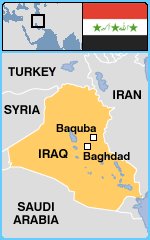
G.I.’s Forge Sunni Tie in Bid to Squeeze Militants
BAQUBA, Iraq, June 30 — Capt. Ben Richards had been battling insurgents from Al Qaeda in Mesopotamia for three weeks when he received an unexpected visitor.
Abu Ali walked into the Americans’ battle-scarred combat outpost with an unusual proposal: the community leader was worried about the insurgents, and wanted the soldiers’ help in taking them on.
The April 7 meeting was the beginning of a new alliance and, American commanders hope, a portent of what is to come in the bitterly contested Diyala Province.
Using his Iraqi partners to pick out the insurgents and uncover the bombs they had seeded along the cratered roads, Captain Richards’s soldiers soon apprehended more than 100 militants, including several low-level emirs.
The Iraqis called themselves the Local Committee; Captain Richards dubbed them the Kit Carson scouts.
“It is the only way that we can keep Al Qaeda out,” said Captain Richards, who operates from a former Iraqi police station in the Buhritz sector of the city that still bears the sooty streaks from the day militants set it aflame last year.
The American military has struggled for more than four years to train and equip the Iraqi Army. But here the local Sunni residents, including a number of former insurgents from the 1920s Revolution Brigades, have emerged as a linchpin of the American strategy.
The new coalition reflects some hard-headed calculations on both sides. Eager for intelligence on their elusive foes, American officers have been willing to overlook the past of some of their newfound allies.
Many Sunnis, for their part, are less inclined to see the soldiers as occupiers now that it is clear that American troop reductions are all but inevitable, and they are more concerned with strengthening their ability to fend off threats from Sunni jihadists and Shiite militias. In a surprising twist, the jihadists — the Americans’ most ardent foes — made the new strategy possible. Al Qaeda in Mesopotamia, a predominantly Iraqi organization with a small but significant foreign component, severely overplayed its hand, spawning resentment by many residents and other insurgent groups.
Imposing a severe version of Islamic law, the group installed its own clerics, established an Islamic court and banned the sale of cigarettes, which even this week were nowhere to be found in the humble shops in western Baquba to the consternation of patrolling Iraqi troops.
The fighters raised funds by kidnapping local Iraqis, found accommodations by evicting some residents from their homes and killed with abandon when anyone got in their way, residents say. A small group of bearded black-clad militants took down the Iraqi flag and raised the banner of their self-proclaimed Islamic State of Iraq.
“They used religion as a ploy to get in and exploit people’s passions,” said one member of the Kit Carson scouts, who gave his name as Haidar. “They were Iraqis and other Arabs from Syria, Afghanistan, Jordan, Saudi Arabia and Egypt. They started kicking people out of their houses and getting ransom from rich people. They would shoot people in front of their houses to scare the others.”
Collaborations like the one with the scouts in Baquba are slowly beginning to emerge in other parts of Iraq. In Baquba they face some notable obstacles, primarily from the Shiite-dominated provincial and Baghdad ministries that are worried about American efforts to rally the Sunnis and institutionalize them as a security force.
But with Prime Minister Nuri Kamal al-Maliki’s government showing scant progress toward political reconciliation and the American military eager to achieve a measure of stability before its elevated troop levels begin to shrink, American commanders appear determined to proceed with this more decentralized strategy — one that relies less on initiatives taken by Iraqi leaders in Baghdad and more on newly forged coalitions with local Iraqis.
A West Point graduate, Idaho native and former Mormon missionary who worked for two years with Chinese immigrants in Canada, Captain Richards commands Bronco Troop, First Squadron, 14th Cavalry Regiment. When the 31-year-old officer was first sent to Buhritz in mid-March as part of a battalion-size task force, he encountered a deeply entrenched foe who numbered in the thousands.
Many of the members of Al Qaeda in Mesopotamia were ensconced in a sprawling palm grove-laden sanctuary south of Baquba and east of the Diyala River. The area, which is still under the group’s control, is still so replete with arms caches, insurgent leaders, fighters and their supporters that American soldiers have taken to calling it the Al Qaeda Fob, or forward operating base in American military jargon.
The insurgents also had a firm grip on the city, the provincial capital of Diyala, which Abu Musab al-Zarqawi made the center of his self-styled Islamic caliphate before he was killed in an airstrike near Baquba last year. The key supply and communications lines between the insurgents’ rural staging area and the city ran through the Buhritz, making it vital ground for Al Qaeda.
The militants’ hold on the region was facilitated, senior American officers now acknowledge, by American commanders’ decision to draw down forces in the province in 2005 in the hopes of shifting most of the responsibility for securing the region onto the Iraqis. That strategy backfired when the Iraqi authorities appointed overly sectarian Shiite army and police regional commanders, alienating the largely Sunni population, and otherwise showed themselves unable to safeguard the area.
“Up until Captain Richards went in and met the 1920s guys, we fought,” recalled Lt. Col. Mo Goins, the commander of the First Battalion, 12th Infantry Regiment, which held the line in Baquba until reinforcements began to arrive in March. “That is what we did. Small arms. Mortars. I.E.D’s.”
Captain Richards’s soldiers arrived in Buhritz in mid-March as part of a battalion-sized operation. Unlike many earlier operations, the Americans showed up in force and did not quickly withdraw. The residents saw an opportunity to challenge Al Qaeda, and for a week, the two sides battled it out in the streets.
Initially, the Americans stood on the sidelines, concerned that they might be witnessing a turf fight among insurgents and militias. “We were not sure what was going on,” Captain Richards recalled. “We were not sure we could trust the people not to turn on us afterwards.”
But after the militants gained the upper hand and more than 1,000 residents began to flee on foot, the Americans moved to prevent the militants from establishing their control throughout the neighborhood. The soldiers called in an airstrike, which demolished a local militant headquarters.
The meeting between the residents and the Americans was Abu Ali’s initiative. The locals wanted ammunition to carry on their fight. Captain Richards had another proposal: the residents should tip off the Americans on which Iraqis belonged to Al Qaeda in Mesopotamia and where they had buried their bombs.
At first, no more than a dozen of the several hundred Sunnis who were taking on the militants served as Kit Carson scouts, but they made a vital difference. Unlike Anbar Province, where the American military has formed similar alliances, Diyala lacks a cohesive tribal structure. Nor did another Sunni insurgent group, the 1920s Revolution Brigades, deliver fighters en masse.
Even so, some of the main obstacles that the Americans have faced in institutionalizing the arrangement with the scouts have come from the United States’ ostensible allies in the Iraqi government. According to Captain Richards, the provincial police chief, Maj. Gen. Ghanen al-Kureshi, repeatedly resisted efforts to hire the local Sunnis.
Captain Richards rejected a group of Shiite police recruits from Baghdad, fearing they might be penetrated by Shiite militias. Determined to get his scouts hired, he loaded 50 scouts and other residents on his Stryker vehicles and drove them to the provincial headquarters over the insurgent-threatened roads.
Today, the police number only 170, a fraction of the police force in adjoining areas. The small police force, made up of scouts and Sunni residents, was provided with only two trucks, seven radios and a paltry supply of ammunition that the Sunni residents have managed to supplement by buying ammunition on the black market from corrupt Interior Ministry officials in Baghdad. Another 150 scouts participate as unpaid monitors in a neighborhood watch program to guard key routes in and out of the area that Captain Richards oversees.
“The people in the community think that he is actively trying to prevent the Buhritz police from establishing themselves because the Shia government does not want a legitimate Sunni security force in Diyala Province,” Captain Richards said, referring to General Ghanen, the provincial police chief.
Colonel Goins had a more charitable view of the provincial chief’s actions, saying that he was coping with personnel and weapons shortages, as well as Interior Ministry guidance to build up the force in other areas. “Right now, his resources are extremely limited,” Colonel Goins said.
The new police and neighborhood watch monitors appear to work well with the local Iraqi Army unit and police officials. But a local Iraqi Army commander expressed doubts that the scouts, in uniform or not, amounted to a disciplined, military unit that could take and hold ground.
During a quick visit to two villages, Guam and Abu Faad, the Americans and their Iraqi allies tried to persuade welcoming but still wary residents that they needed to overcome their fears of Al Qaeda in Mesopotamia and provide tips for their own security.
The American military is trying to expand the alliance into the western sector of the city, which a Stryker brigade recently wrested back from Qaeda militants. During the recent American assault in the western sector, soldiers from Blackhawk Company got a glimpse of an alliance the Americans hope to see. An Iraqi seemingly emerged from nowhere, announced himself as a member of the 1920s Revolution Brigades and warned the soldiers that insurgents could be found on the far side of a sand berm around the corner. The tip was accurate.

Wild Thing’s comment………..
This is long but very interesting and informative.
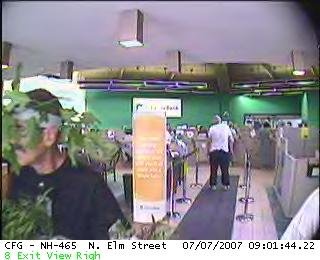


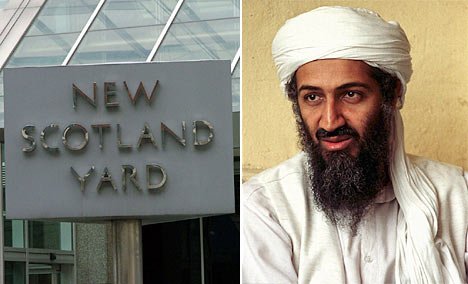



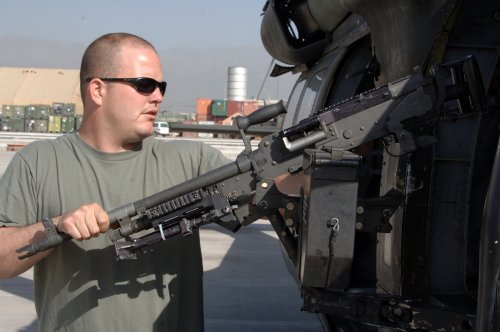

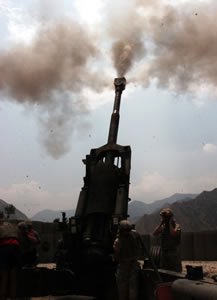


 ….Thank you Jack of
….Thank you Jack of 

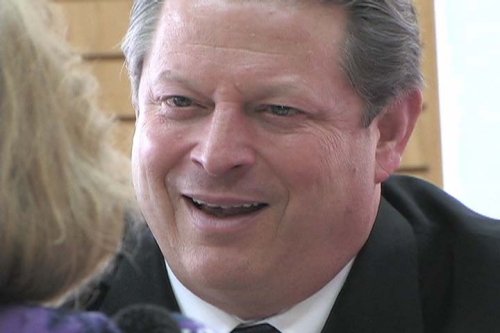


Recent Comments